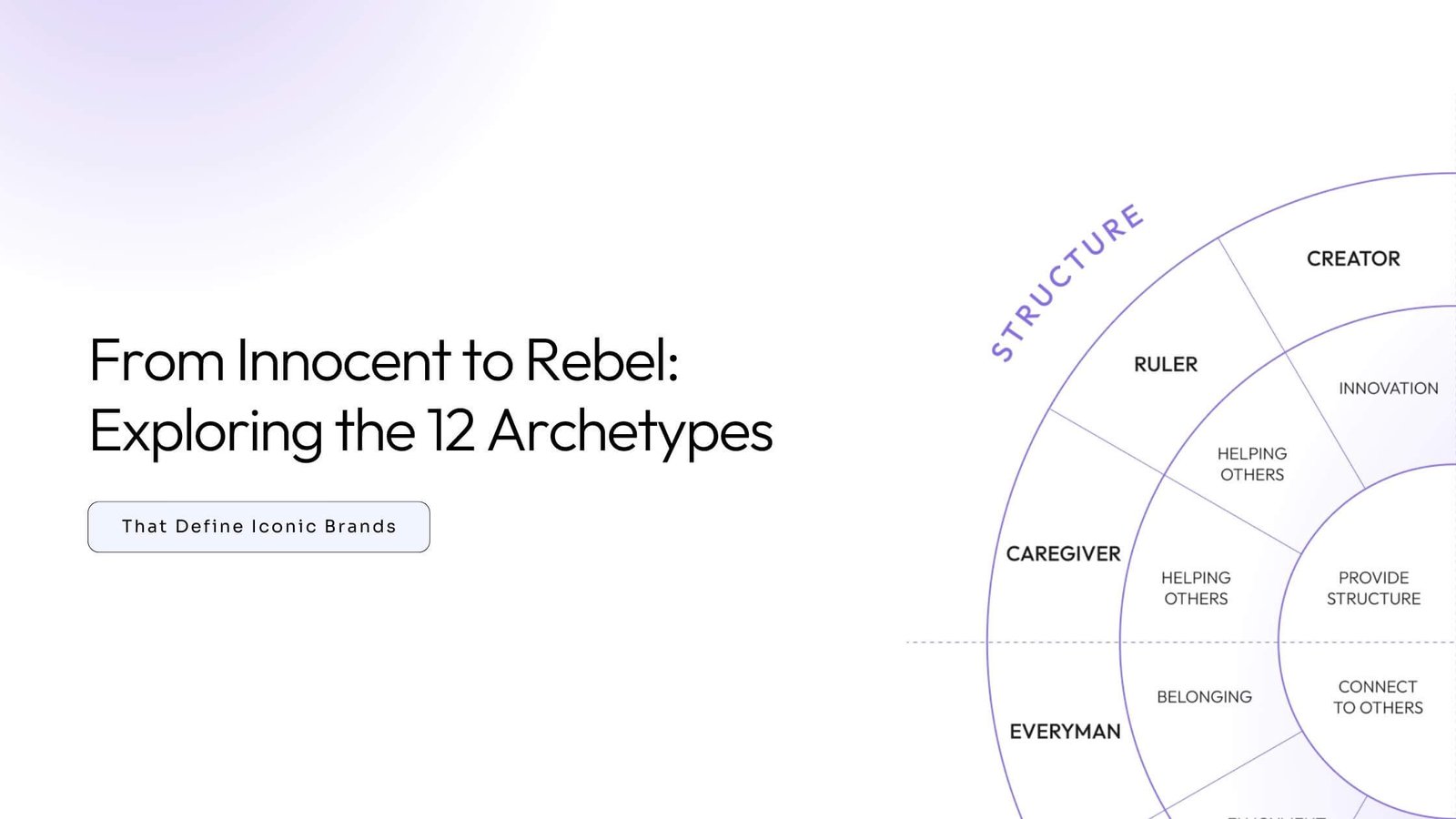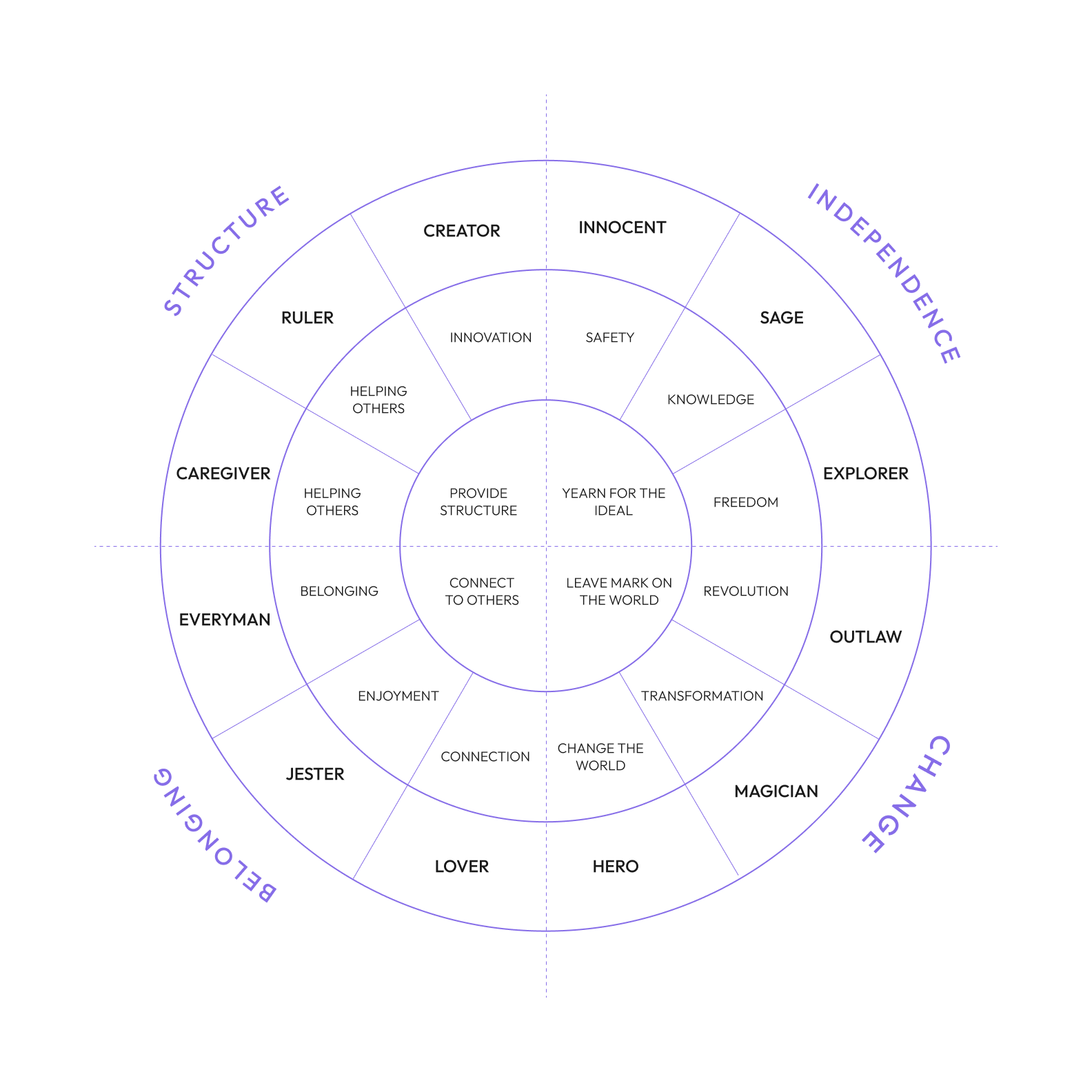From Innocent to Rebel: Exploring the 12 Archetypes That Define Iconic Brands

Have you ever wondered why certain brands evoke strong emotions and resonate deeply with their customers? It all comes down to their brand archetypes. Brand archetypes are universally recognized symbols and patterns that tap into our collective unconscious. They help brands establish a distinct personality and connect with their target audience on a deeper level.
Think about characters in a book or movie: People identify with certain characters—the rebel, the lover, the brain, etc. We know these as archetypes and, in business, we refer to them as brand archetypes. These archetypes represent powerful personas that resonate with audiences on a deep level.
What is a Brand Archetype?
Every brand has a personality, a distinct set of traits that defines its identity and shapes its relationship with consumers. This is where brand archetypes come into play. A brand archetype is a symbolic representation of a brand's core values, beliefs, and characteristics. It's like the DNA of a brand, guiding its messaging, visuals, and overall brand strategy.
To truly understand the concept of brand archetypes, we turn to the work of renowned psychologist Carl Jung. Jung introduced the concept of archetypes as universal patterns of behavior and symbols that reside in the collective unconscious of human beings. Archetypes are deeply ingrained in our psyche and help us make sense of the world around us.
In the realm of branding, archetypes provide a framework for creating meaningful connections with consumers. By aligning a brand with a specific archetype, it taps into the collective consciousness and resonates with the desires, aspirations, and values of its target audience.
Let's continue our journey into the captivating world of brand archetypes and discover how they shape brand identity and consumer perception.
Why Should You Use Brand Archetypes?
Unleash Your Brand's Storytelling Power:
Brand archetypes provide a powerful storytelling framework that allows you to craft narratives that captivate and engage your audience. By embodying a specific archetype, you can create a brand story that resonates with your customers on a deeper level.
Consistency that Builds Trust:
Brand archetypes provide a consistent framework for messaging and communication. When your brand consistently embodies its archetype across all touchpoints, it builds trust and familiarity with your audience. Consistency breeds confidence in your brand and reinforces its authenticity.
Create a Memorable Brand Experience:
Brand archetypes allow you to create a cohesive and immersive brand experience. By infusing your archetype into every aspect of your brand, from visuals to tone of voice, you create a distinct and memorable experience that resonates with your audience long after the initial interaction.
Stand Out from the Crowd:
In a crowded marketplace, differentiation is key. Brand archetypes help you carve out a unique and memorable brand identity. By embodying a distinct archetype, you can set your brand apart from the competition and make a lasting impression on your customers.
The brand archetype wheel
There are 12 brand archetypes. An archetype wheel offers a clear visual breakdown of:
- What the 12 brand archetypes are
- What they’re best known for

The 12 brand archetypes (with examples)
We'll delve into each archetype’s unique traits and include examples of brands that embody them:
1. The Innocent
Embracing Simplicity, Joy, and Optimism
Innocence is a powerful force that radiates purity, simplicity, and a childlike sense of wonder. Brands that embody the innocent archetype create a feeling of safety and evoke positive emotions.
Think of brands like Coca-Cola, which has built its image around happiness and the joy of simple pleasures.
2. The Explorer
Embracing Curiosity, Adventure, and Freedom
The explorer archetype embodies the spirit of curiosity, adventure, and the desire for freedom.
Brands like GoPro exemplify the explorer archetype, encouraging individuals to push boundaries, explore new horizons, and live life to the fullest.
3. The Sage
Embracing Wisdom, Knowledge, and Expertise
The sage archetype represents wisdom, knowledge, and expertise. Brands that embody the sage archetype position themselves as experts and trusted sources of information. They seek to educate, enlighten, and guide their customers.
An example of the sage archetype in action is TED Talks, where experts share their wisdom and inspire audiences.
4. The Hero
Embracing Courage, Determination, and Triumph
The hero archetype tells stories of triumph over adversity and inspires others to conquer their own challenges.
Nike, with its iconic "Just Do It" slogan, empowers individuals to become heroes of their own stories.
5. The Magician
Embracing Transformation, Vision, and Magic
The magician archetype offers transformative experiences and inspires individuals to envision a better future.
Apple, with its innovative products and visionary approach, exemplifies the magician archetype.
6. The Lover
Embracing Passion, Sensuality, and Emotional Connection
The lover archetype taps into emotions, creates sensual experiences, and forges deep connections with customers.
Victoria's Secret is a prime example, captivating audiences with its sensuality and emotional appeal.
7. The Jester
Embracing Laughter, Fun, and Spontaneity
The jester archetype brings joy and entertainment to customers' lives. Brands that embody the jester archetype embrace humor, spontaneity, and playfulness.
Old Spice is known for its humorous and memorable advertising campaigns.
8. The Rebel
Embracing Nonconformity, Liberation, and Defiance
The rebel archetype challenges the status quo, encourages individuality, and sparks a sense of rebellion.
Harley-Davidson embodies the spirit of freedom and defies convention.
9. The Creator
Embracing Innovation, Imagination, and Vision
The creator archetype represents innovation, imagination, and vision.
Brands like LEGO inspire individuals to unleash their creativity and build their own world of possibilities.
10. The Ruler
Embracing Leadership, Authority, and Influence
The ruler archetype exudes authority, leadership, and influence. Brands that embody the ruler archetype establish themselves as leaders in their industries, commanding respect and trust.
Rolex is an example of a brand that symbolizes luxury and status.
11. The Caregiver
Embracing Compassion, Nurturing, and Support
The caregiver archetype embodies compassion, nurturing, and support.
Brands like Johnson & Johnson focus on caring for others, promoting products that nurture and protect.
12. The Everyman
Embracing Relatability, Authenticity, and Inclusivity
The everyman archetype represents relatability, authenticity, and inclusivity. Brands that embody the everyman archetype connect with their audience by being down-to-earth and relatable. They focus on inclusivity, making everyone feel welcome and represented.
One brand that embraces the everyman archetype is IKEA, which offers affordable and functional furniture for everyday people.
Conclusion:
Each archetype offers a unique set of traits and powers that can help you forge deeper connections and win the hearts of your audience. By understanding and embracing these archetypes, you can create a strong brand identity that resonates with your target market. So, go forth, explore, and unleash the power of archetypes in your branding strategy to create a lasting impact.
Join my mailing list
P.S I promise not to be a human spam.